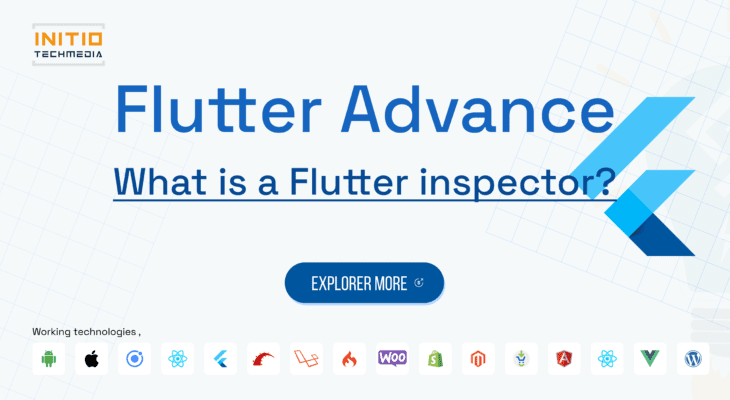Leading Mobile & web Development company which is providing Ready to publish apps & on demands application in Global Bussiness.
- 908, B Square 2, Ambli Rd, near Hotel Double tree Hilton, Vikram NagarAhmedabad-380054, Gujarat, India
- (+91) 8758432204Give us a call
- contact@initiotechmedia.com24/7 online support

What is a Flutter inspector?
- payal patel
- May 16, 2023
- 0
In the context of mobile app development using the Flutter framework, the Flutter Inspector is a powerful tool that helps developers analyze and debug their Flutter applications. It is an integrated tool that provides a visual representation of the app’s widget hierarchy, allows inspection of the properties and values of widgets, and assists in identifying and fixing UI issues.
The Flutter Inspector can be accessed through the development environment, such as the Flutter DevTools or the integrated development environment (IDE) plugins like Android Studio or Visual Studio Code.
Here are some key features and functionalities of the Flutter Inspector:
Widget Tree Visualization: The Flutter Inspector displays a tree structure of widgets, showing their parent-child relationships. This visual representation helps developers understand the widget hierarchy and how different widgets are nested within each other.
Widget Inspection: By selecting a specific widget in the Flutter Inspector, developers can view detailed information about that widget, including its properties, constraints, and current state. This information can be helpful for diagnosing and debugging issues related to specific widgets.
Widget Highlighting: When a widget is selected in the Flutter Inspector, it is highlighted in the app’s UI. This feature helps developers quickly identify the visual representation of a specific widget on the screen.
Hot Reload and Hot Restart: The Flutter Inspector works seamlessly with Flutter’s hot reload and hot restart features. Developers can make changes to their code, and the Inspector will update the widget tree and UI accordingly, allowing for rapid iteration and experimentation.
Performance Analysis: The Flutter Inspector provides insights into the performance of the app, including rendering performance, frame rates, and layout information. This allows developers to identify performance bottlenecks and optimize their apps for better user experience.
Overall, the Flutter Inspector is an essential tool for Flutter developers as it simplifies the process of understanding, inspecting, and debugging the UI components of Flutter applications. It provides a visual interface to analyze and manipulate widgets, aiding in the development and refinement of high-quality mobile apps.
- Tags:
- Flutter 2.0
- flutter 2023
- Flutter 3.0
- Flutter advance
- Flutter App developer
- Flutter app development
- flutter architechture
- Flutter bloc
- flutter developer
- Flutter development
- Flutter Libraries
- flutter machine learning
- flutter test
- Flutter Tips
- Flutter Ui
- Flutter Widget
- Hire flutter developers
- IOS
- mobile app development
- Mobile app with AI
- Mobile app with AI #AR
WhatsApp us

